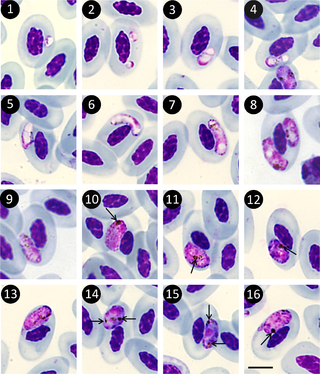
The Moraceae—often called the mulberry family or fig family—are a family of flowering plants comprising about 38 genera and over 1100 species. Most are widespread in tropical and subtropical regions, less so in temperate climates; however, their distribution is cosmopolitan overall. The only synapomorphy within the Moraceae is presence of laticifers and milky sap in all parenchymatous tissues, but generally useful field characters include two carpels sometimes with one reduced, compound inconspicuous flowers, and compound fruits. The family includes well-known plants such as the fig, banyan, breadfruit, jackfruit, mulberry, and Osage orange. The 'flowers' of Moraceae are often pseudanthia.

The soldier beetles (Cantharidae) are relatively soft-bodied, straight-sided beetles. They are cosmopolitan in distribution. One of the first described species has a color pattern reminiscent of the red coats of early British soldiers, hence the common name. They are also known commonly as leatherwings because of their soft elytra.

The Photinini are a large tribe of fireflies in the subfamily Lampyrinae. Photinus pyralis is famous in biotechnology for its luciferase gene. This is sometimes employed as a marker gene; genetically modified organisms which contain it start to glow like the firefly when brought in contact with a luciferin-containing medium. Firefly luciferases differ slightly between taxa, resulting in differently colored light and other properties, and in most cases where "firefly luciferase" is used in some application or study, it is the specific luciferase of P. pyralis.

The Pyronemataceae are a family of fungi in the order Pezizales. It is the largest family of the Pezizales, encompassing 75 genera and approximately 500 species. Phylogenetic analyses does not support the prior classifications of this family, and suggest that the family is not monophyletic as it is currently circumscribed.

The Ostropales are an order of fungi in the class Lecanoromycetes. The order was circumscribed by Swedish botanist John Axel Nannfeldt in 1932. The order contains 4 families and 46 genera, including 6 genera of uncertain familial placement.

The Stictidaceae are a family of fungi in the order Ostropales. It has 30 genera and about 240 species.

Austrosimulium is a genus of 31 species of black flies that are distributed in Australia and New Zealand. There are 2 subgenera: Austrosimulium whose species are principally from New Zealand, and Novaustrosimulium which are exclusively Australian. Austrosimulium is a sister genus to the monospecific Paraustrosimulium of South America.

The Haemosporida are an order of intraerythrocytic parasitic alveolates.
The Schizothyriaceae are a family of fungi of uncertain ordinal placement in the class Dothideomycetes. It comprises 10 genera and around 70 species.

The Onygenaceae are a family of fungi in the Ascomycota, class Eurotiomycetes.

Rhodomelaceae is estimated to be the largest red algae family, with about 125 genera and over 700 species.
Cenophengus is a genus of glowworm beetles in the family Phengodidae. There are at least 30 described species in Cenophengus.
Mastinocerini is a tribe of beetles in the family Phengodidae. There are at least 190 described species in Mastinocerini.

Phengodes is a genus of glowworms in the beetle family Phengodidae. There are more than 30 described species in Phengodes.

Tytthonyx is a genus of soldier beetles in the family Cantharidae. There are about 19 described species in Tytthonyx.
Tenaspis is a genus of fireflies in the beetle family Lampyridae. There are about 18 described species in Tenaspis.
The Phengodinae are a subfamily of phengodid beetles (Phengodidae). It contains mostly North American species.

Telegeusinae is a small subfamily of beetles in the family Omethidae recognizable by enlarged palpi found in males. Though relatively rare, males are sometimes found in large numbers in black light traps. Females are not known in this group, but it is theorized that females are larviform as found in many closely related taxa.












